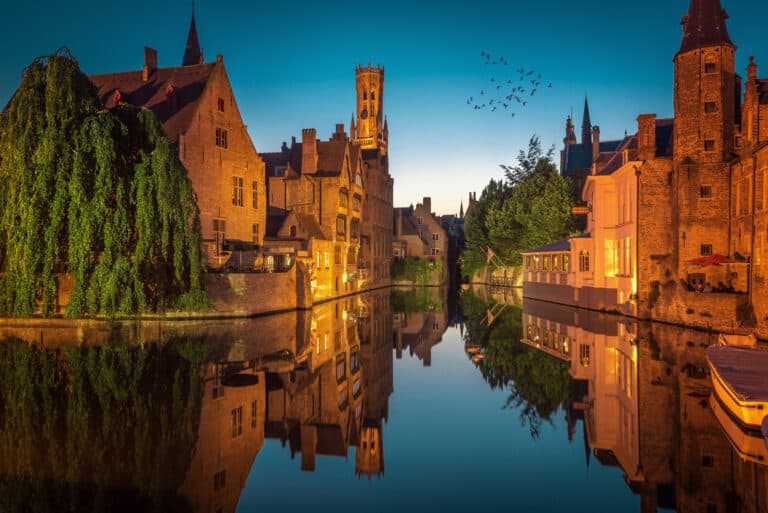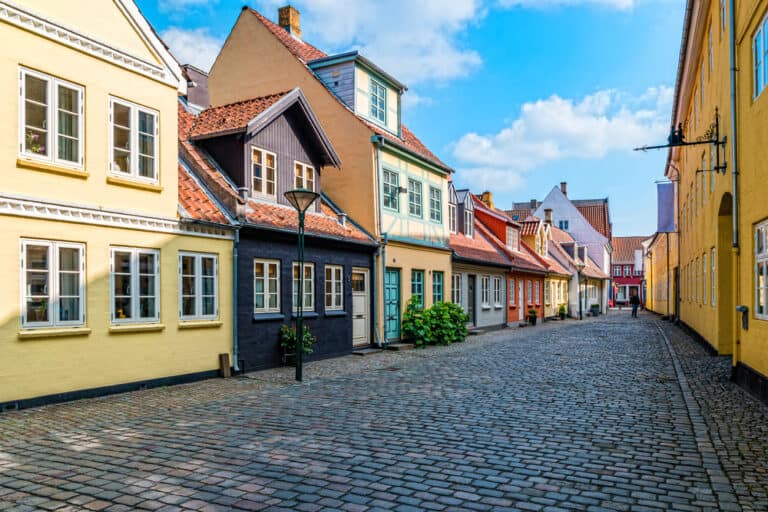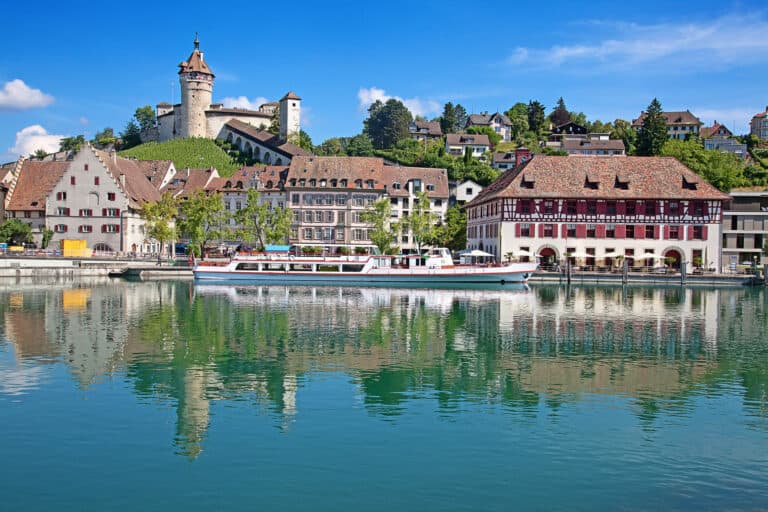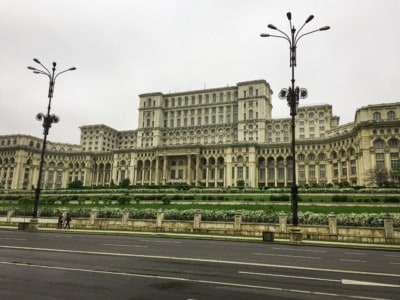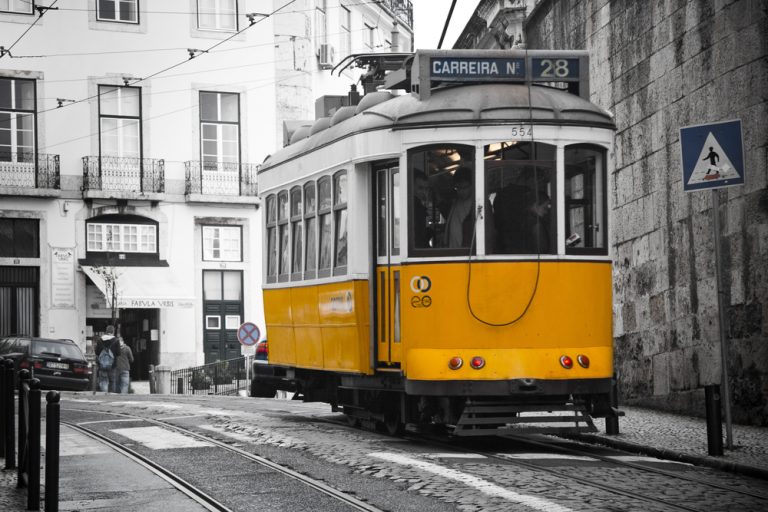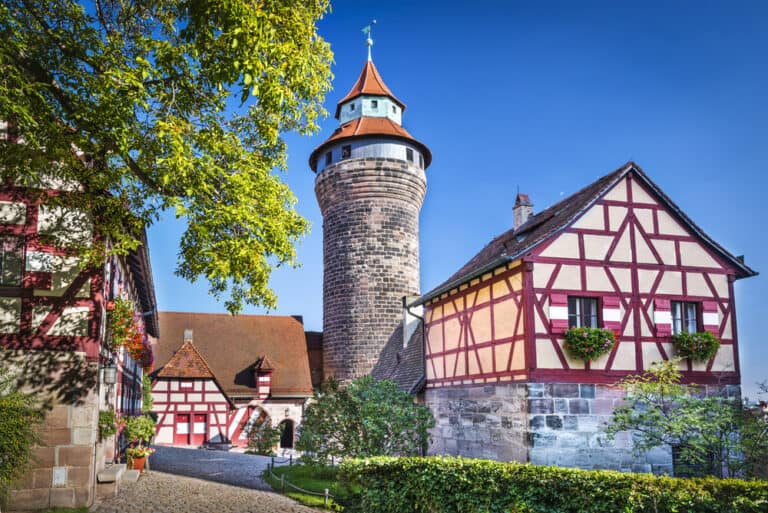One day in Monaco: your itinerary for the perfect trip
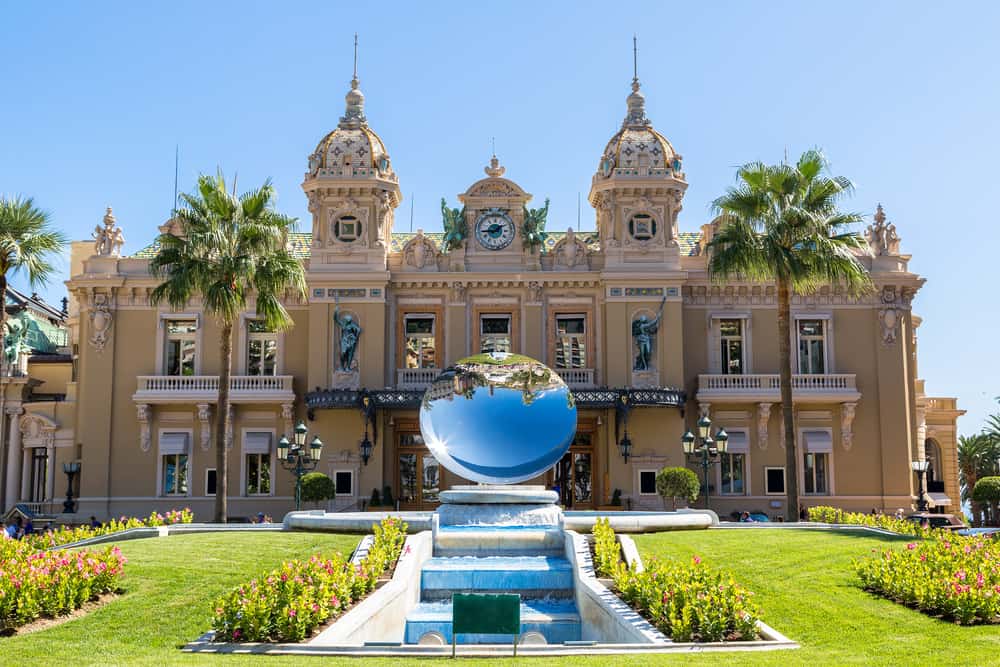
Nestled along the picturesque French Riviera, the principality of Monaco is an ideal destination for a short trip.
Famous for its glamorous and opulent lifestyle and the Grand Prix that takes place here every year, a visit to Monaco gives you a great insight into all of these, as well as the history of the ruling Grimaldi family. You can also take a look at some of the beautiful coastal scenery along this part of the Cote d’Azur.
And you’ll also get to tick another country off your list!
Although it’s the world’s second smallest city, this doesn’t mean it’s not packed full of sights. For such a tiny country, there’s a remarkably large number of things to see and do.
My post outlines the best things to check out if you only have one day in Monaco. I’ve also included a bit on the history of Monaco and information about how to get here.
After setting out an itinerary for the day, I’ve given you some information on the best time to visit Monaco, whether it’s worth visiting for just a day, and other places to visit nearby.
This post contains affiliate links
About Monaco
The Principality of Monaco – known as such because a Prince rules over it – is tiny. It is just over 2 square kilometres. It’s the second smallest country in the world after the Vatican City.
Monaco is situated along the Cote d’Azur on the south coast of France, in between Nice and Menton, and looks out onto the Mediterranean Sea. Nice is around 20 km away, a journey of just 20 minutes by train and slightly longer by car.
You can also catch a ferry from Nice to Monaco. This takes between 45 minutes and an hour each way, but is a fantastic way to admire the incredible coastline.
The small, charming town of Menton is also nearby – around 15 minutes by train. San Remo in Italy is an hour and a quarter by train, including a change in Ventimiglia.
The history of Monaco
Monaco’s history dates back to the 13th century and Francesco Grimaldi, who took the land from the Genoese and seized the fortress.
After several turbulent centuries, there became a Prince of Monaco in the 17th century. Ever since then, the House of Grimaldi have ruled and has produced every prince. The Principality gained independence from France in the 19th century.
In 1865, the famous Monte-Carlo casino and other lavish buildings were built. As gambling was banned in nearby France, it became a magnet for the rich and famous in the area.
The current Prince of Monaco is Prince Albert II, the son of Prince Rainier and Princess Grace (Grace Kelly, the famous Hollywood actress). He has reigned since 2005.
The official language of Monaco is French, and the currency is the euro. Having the euro adds to the ease of a visit here, as there’s no need to change money if you’re staying in France or Italy.
How to get to Monaco for the day
There are several really easy ways to get to Monaco.
On a tour
You can book a tour that will take you to Monaco and give you the services of a tour guide. This might be the best option if you want to visit other places as part of the same day out.
There are several tours that will take you to Monaco. Many of these are combined with the opportunity to stop in other picturesque towns and villages.
This tour runs from either Nice or Cannes.
It travels along the coast road via the small medieval hilltop village of Eze (see my post on day trips from Nice for more information). When you arrive in Monaco, you drive along the Grand Prix route, visit the old town, and get some free time to explore further.
Similarly, this tour takes you from Nice to Monaco via Eze and Antibes.
By train
We’ve been to Monaco twice by train. We travelled once from Nice and once from Menton, both in France. The train line runs along the coastline, and you get to see some amazing views along the way.
The journey from Nice takes around 20 minutes from Nice Ville station, the city’s main train station. From Menton, it is less than 15 minutes.
You can also travel by train from other places along the French Riviera, including Cannes (around an hour’s journey) and Antibes (around 50 minutes). The inland town of Grasse takes around an hour and a half by train.
By ferry
Unsurprisingly, given its coastal location, Monaco can also be reached from Nice by ferry.
This takes between 45 and 60 minutes.
By car
If you have a rental car while you’re away, you can also drive to Monaco. The journey from Nice should take less than half an hour depending on the traffic.
You can go via the A8 motorway. Alternatively, you could travel on one of the three scenic clifftop roads along the French Riviera (known as Corniches). These run to Menton near the Italian border.
The Corniche routes give you views of the coastline and the towns below. The views of Monaco from the Grand Corniche are particularly spectacular.
This site provides more information on the Corniches and the routes they take.
By bus
You can also take the number 607 bus to Monaco from Nice (note some sites refer to this as line 100). This option is more affordable and takes you along the coastal road.
Although the journey is longer than by train and will vary with the traffic conditions, it tends to be less than an hour. You can catch the bus at Nice Port.
The bus from Menton takes less than 40 minutes. However, buses from other places along the Cote d’Azur are longer (e.g., over an hour and three-quarters from Antibes and over two hours from Cannes).
If you’re visiting Monaco for longer than a day
If you plan to spend more than a day in Monaco and are flying in specifically for a short break, then the nearest international airport is Nice.
You can either catch a train to Monaco (which would involve going into the city and taking a train from there) or take the number 80 bus from the airport along the coastline. This takes less than an hour.
You can also connect to Nice from other cities in France and then travel to Monaco.
Getting around Monaco
Walking around Monaco is an excellent way to see the main sights. You can get off the main roads and explore narrow streets, pretty town squares, and any coastal viewpoints you come across en route.
Some parts are fairly hilly, but there are lifts and escalators in places to help you.
It should take less than an hour to get across Monaco on foot, although this will obviously depend on how often you stop off or how direct your route is.
You can also book a hop-on/hop-off bus. This might be the best way to get around if you are really pushed for time or want to avoid walking.
You can pick the bus up at various stops, one of which is at the train station. The bus has stops that will take you to most of the places on my one day itinerary.
There are also public buses in Monaco that you could use to get around, as well as water taxis. For more information, visit this site.
The top things to do in one day in Monaco
There are several districts in Monaco. The main ones to focus on with one day are the Monte Carlo district and Monaco-Ville, with a side visit to La Larvotto.
You can also stop en route in La Condamine and pop over to Fonteveille if you have time.
A one day Monaco itinerary
You can start your one day in Monaco in the Monte Carlo area or in Monaco-Ville. However, I recommend heading first towards Monaco-Ville.
If you’re walking and have arrived by train, I’d walk here via La Condamine. If you’re using the hop-on/hop-off bus, skip the first stop below and get off at the Place du Palais stop.
Below is my summary of an itinerary for one day in Monaco. You may also find the maps here useful when planning your visit.
Your itinerary for one day in Monaco
– Start at the Place D’Armes and browse the historic food and flower market
– Head to Monaco-Ville and the Prince’s Palace. Visit the State Rooms if they are open, see the Changing of the Guard, and take in the stunning views
– Walk down to Monaco Cathedral, the site of historic Monegasque royal family occasions
– Visit a nearby museum or garden
– Head to Monte Carlo; admire the Casino and Opera House and other Belle Epoque buildings in the Place du Casino
– Wander around the Casino Gardens, pop into the Metropole for some retail therapy, and walk onto the small Japanese Garden.
– End the day with a cool drink on the beach at La Larvotto
Start at Place D’Armes in La Condamine
La Condamine is a vibrant district. You’ll see some of this in the small market in Place D’Armes square. If you’re walking from the train station, this will be en route to Monaco-Ville, so it’s worth a brief stop here.
The market is open every day and sells lots of fresh produce and flowers. And if you need a quick coffee before your day of sightseeing, you could stop off at one of the cafes in the square; many have outdoor seating.
Move on to Monaco-Ville
You can walk into Monaco-Ville (Le Rocher) from the Place D’Armes or catch the bus here.
Monaco-Ville is the old town of Monaco, where you can get a sense of Monaco’s history. It sits on ‘the Rock’, a headland 200 feet above the sea. You can get spectacular views from this vantage point out to sea and down to the harbour.

The Prince’s Palace
The Prince’s Palace (Palais Princier de Monaco) is Prince Albert II’s official residence and dates back to the 13th century. It’s a striking building that was once a Genoese fortress.
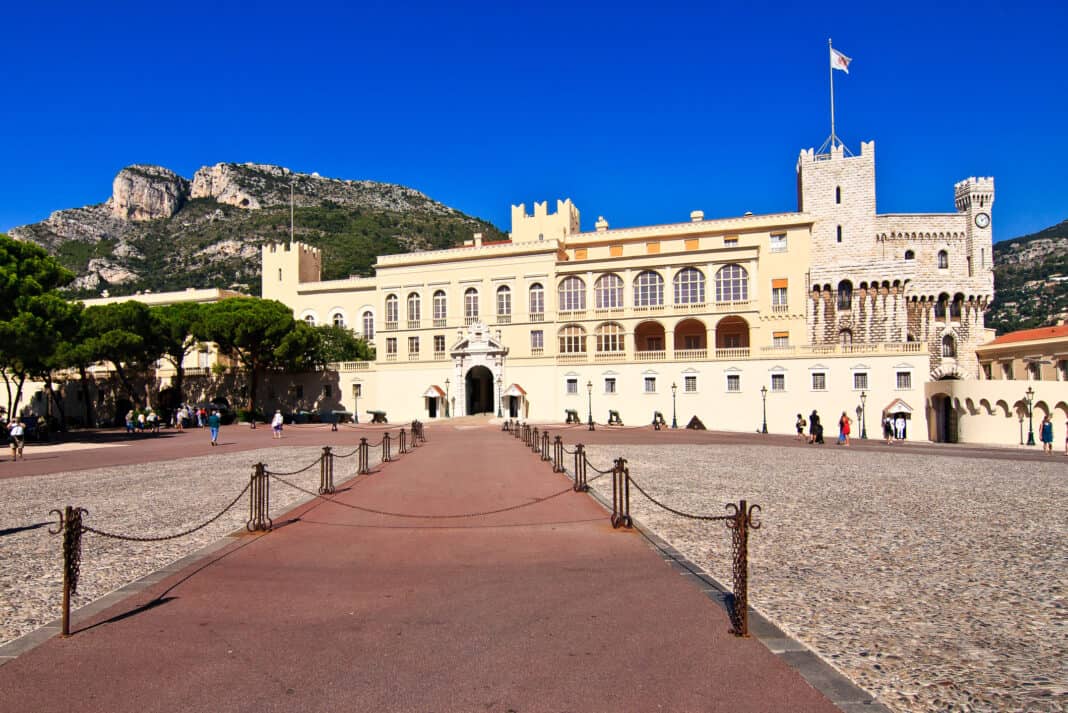
Because it is the Royal Family’s residence, the State Apartments are only open to the public from the beginning of April to mid-October (and are closed during the Grand Prix weekend).
So, if this is a place you want to go into, you need to plan your trip accordingly.
Inside, you’ll see lavish rooms and galleries full of artwork, frescoes, and grand chandeliers. This includes the Throne Room, the Palace Chapel, and the Mirror Gallery (said to emulate that in the Palace of Versailles in Paris).
If you don’t get to go in because it’s closed when you visit, or you don’t have time, it’s still worth looking at the outside of the palace. From the Palace Square in front, you also get some great views of the port of Monaco, Port Hercules. If you look down, you will see scores of luxury yachts below.
And at 11.55 am every day, you can watch the time-honoured tradition of the Changing of the Guard ceremony in the square outside.
Monaco Cathedral
After seeing the Prince’s Palace, head to Monaco Cathedral (Cathedrale de Monaco). This is around a 15 minute walk away.
The cathedral – dedicated to Our Lady of the Immaculate Conception – dates from the late 19th century. It was built on the site of an earlier church (hence it’s often referred to as Saint Nicholas Cathedral, which was the name of the original building).
It is a beautiful white stone building in Roman-Byzantine style, with two magnificent palm trees at the front.

Most of the significant events in Monaco’s recent history have taken place here: weddings, christenings, and funerals. This includes the marriage of Prince Rainier III to Hollywood actress Grace Kelly in 1956. They are both also buried here.
Nearby museums and gardens
After visiting the cathedral, you could visit one of the nearby museums or beautiful gardens. There are several to choose from.
The Oceanographic Museum
The Oceanographic Museum (the Musée Océanographique de Monaco) is further down into Monaco-Ville on the side of the rock of Monaco overlooking the sea.
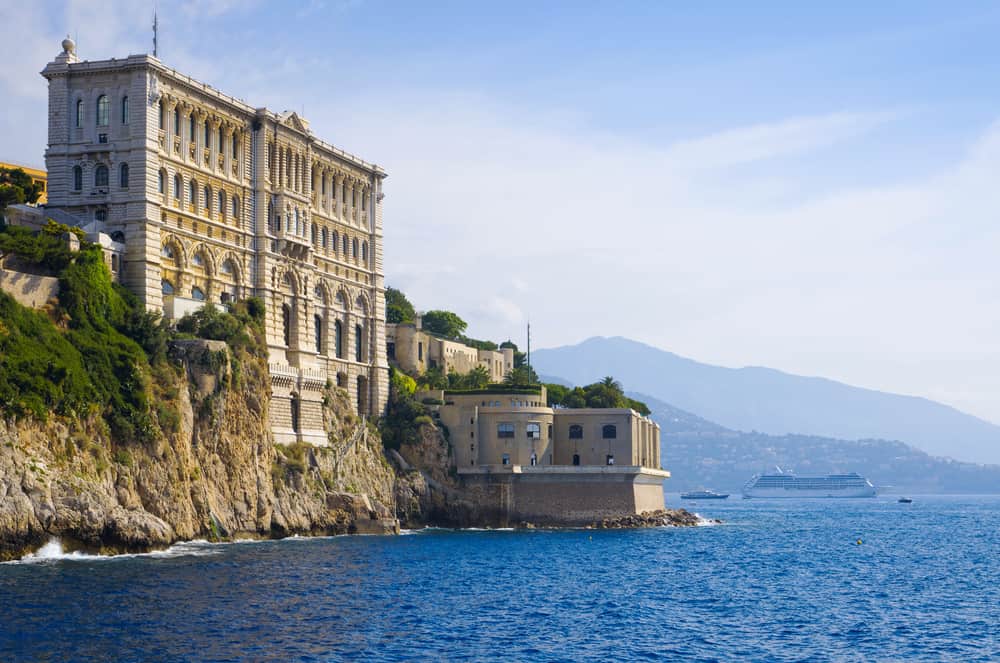
It has aquariums (including what is said to be one the world’s oldest aquariums), a shark lagoon, a sea turtle ‘odyssey’, and other different exhibitions. You can also take a simulated and interactive dive on the Great Barrier Reef!
The Animal Garden
The Animal Garden (Jardin Animalier de Monaco) was founded by Prince Rainier III in the mid-1950s. It is not far from the start of Monaco-Ville.
It houses 300 animals, many of which were abandoned or seized during customs checks.
The Chapel of the Visitation
The Chapel of the Visitation (La Chappelle de la Visitation) is behind the Oceanographic Museum a little further away from the side of the rock. It is a 17th-century baroque chapel that houses a collection of religious art.
The Car Collection of HSH the Prince of Monaco
If you’re a lover of cars, you might also fancy stopping off at the museum that showcases the collection of vintage and racing cars owned by Prince Rainier III (La Collection Automobiles de SAS le Prince de Monaco).
The museum is in the La Condamine area, right by the Hercule Port and part of the Grand Prix route.
The Princess Grace Rose Garden
The Princess Grace Rose Garden (The Roseraie Princesse Grace) is in Fontveille Park and near the football stadium. It was created by Prince Rainier III in 1984 to commemorate his wife.
The rose garden covers a large area containing 4,000 rosebushes. It also has a bronze statue of the Princess within it.
The Exotic Garden of Monaco
There is also the Exotic Garden of Monaco (Le Jardin Exotique de Monaco). This is a bit further away from some of the other sights.
Note that it closed for renovation in 2023, so this isn’t somewhere to add to your itinerary for now. But once it’s reopened, it would be worth visiting if you have time – it’s another place where you can get some great views.

The tourist train
If you’re short on time or want a fun and easy way to see the main sights, you could hop on Monaco’s small tourist train (Le Petit Train de Monaco).
The train’s route begins and ends by the Oceanographic Museum. It takes you on a 30-minute loop around the main sights, including the main ones in Monte-Carlo, and includes an onboard commentary. It also rides along the Grand Prix route.
The train runs daily, except in the winter months from mid-November to the start of February.
Monte Carlo
After exploring ‘the Rock’, you should head to the district of Monte Carlo.
The hop-on/ hop-off bus will take you, or you could catch a local bus (the number 1 line runs to the Place du Casino).
You can also walk between the two areas. If you do, it’s likely to take around half an hour.
The Place du Casino
In the Monte-Carlo district, you will see the glitz and glamour Monaco is famous for. Head to the Place du Casino, with its grassy verge and palm trees, and striking installation in the middle.

As the name suggests, the iconic and famous Monte Carlo casino is here (Casino de Monte-Carlo). This is a magnificent, opulent Belle Epoque building where you’ll see expensive designer cars pulling up (think James Bond).
You can pop into the casino’s lobby and look at some of this glamour. You can also stop and have a drink in the Rotunda Café (note that although there is a dress code for going into the gaming rooms in the casino, there is none if you just want to go into the Atrium or cafe).
The Opera House
Monte-Carlo’s Opera House (the Salle Garnier or Opera de Monte-Carlo) is also here and adjoins the casino. This late 19th century building is also stunning – and apparently has a 5 tonne chandelier!
You can take guided tours of the opera house and also go in to see performances during the Monte Carlo Jazz Festival.

Alternatively, you can stop in the Place Du Casino and people-watch as visitors come and go.
A good place to go for this is in the bar in the nearby Hotel de Paris or on the terrace of the Café de Paris. If you haven’t already had lunch and want to splash out, saving yourself for a meal in Monte-Carlo is worth it.
Alas, we could only afford tea and cake in the Café de Paris, so I can’t vouch for the food. But it’s an ideal place for a stop where you can take the weight off your feet and admire the beautiful architecture of the surrounding buildings.
The Casino Gardens
While you’re here, take a bit of time to wander around the Casino Gardens. These public gardens are beautifully landscaped in ‘French style’, with lawns, palm trees, fountains, sculptures, and a small lake.
There are some shady spots here to get out of the summer sun.

Monte-Carlo shopping (if you can afford it!)
If you want some retail therapy or just want to take a look at how the rich shop, then pop into the Metropole Shopping Centre. This is opposite the Casino Gardens.
The centre itself is glamorous. It has marble floors, ornate staircases, and huge chandeliers hanging from the ceiling. You’ll find luxury clothes shops and boutiques here, jewellers, art and antique shops, and cosmetic and beauty shops.
There are also some cafes and restaurants, a couple of which are a bit more reasonably priced than the Café du Paris by the casino.
The Japanese Garden
A short walk east from the Casino Gardens is the Japanese Garden (Jardin Japonais). This was also created in memory of the late Princess Grace.
It’s a tranquil place where you can get some peace away from the hustle and bustle of city life. The garden is laid out with traditional Japanese landscaping: a Zen garden, bridges over ponds, a waterfall, rockeries, and a tea house.
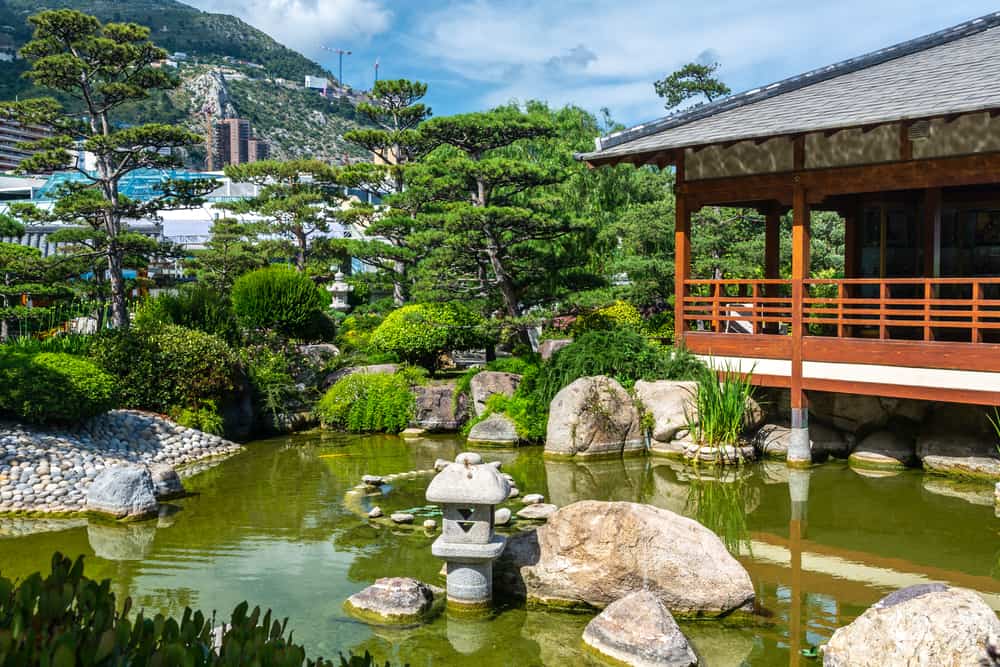
You don’t need to spend much time here, but you could make a quick stop here before heading to your final stop – the beach!
La Larvotto beach
To end your one day in Monaco, I’d suggest finishing up with a visit to the beach. The Plage du Larvotto is on the east side of Monaco. The beach has a promenade behind it and clear, clean water that you can swim in.
The main part is a public beach, but you can also pay for beds and umbrellas on the La Note Bleue’s private beach. You can also rent towels if you want to take a dip in the water and have enough time. There is also a restaurant here.
In the summer, order a cocktail, sit back, and chill out on the sand!
What other places can you visit with Monaco?
If you’re spending time in the French Riviera, you may also want to day trip to other places.
There’s no shortage of places to go to in the area. This includes the bigger towns and cities of Nice, Menton, Cannes, and St. Tropez, as well as some smaller clifftop or inland villages.
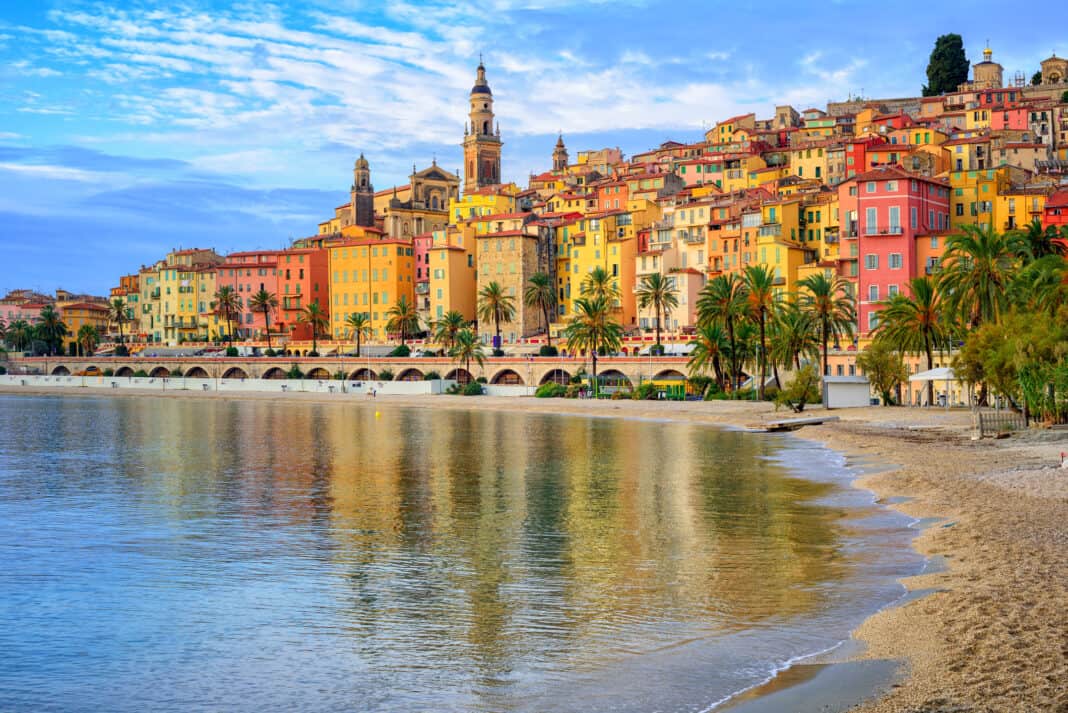
My previous post on 11 day trips from Nice gives you a flavour of some of these. Although it is written with Nice as the base, the recommendations apply equally to other places in the area, including Monaco.
The best time to visit Monaco
There’s not really a ‘best time’ to visit Monaco. It all depends on what you want to see and do. I’ve visited in September when the weather was hot and sunny and also in February when it was grey and rainy. I enjoyed both visits and found no shortage of things to do.
There’s probably several things to consider when deciding when best to visit.
The weather
If you do want to visit when the weather is more likely to be settled, visiting between May and October is an excellent time to go. Temperatures reach the low to mid-20s Celsius in these months, with fewer rainy days.
However, the temperate Mediterranean climate here means that it never really gets very cold. Even in the coldest months of December and January, average temperatures will likely rise into the low teens in Celsius.
So it would also be a perfect winter break if you want to get away (and if you’re coming from London, like me, the weather, while not hot, is likely to be warmer than at home).
What you want to do
You may also want to visit over the summer to ensure you can do certain things. As outlined above, the State Apartments in the Prince’s Palace are only open between April and mid October, and the tourist train only runs between February and mid November.
And a visit to the beach is probably likely to be more alluring in the summer!
Local events
You may also want to time your visit with specific events here and nearby. If you’re a Formula One fan, then a good time to visit is in late May/early June when the Monaco Grand Prix takes place. However, be aware that the Grand Prix will draw crowds and push prices up.
If you want to go during this time, booking as far in advance as possible is a good idea to avoid disappointment.
The Opera season runs from October/November to April, so an autumn, winter, or spring visit might suit opera lovers best. Monte Carlo also hosts a jazz festival once a year.
Alternatively, you could take a day trip to Monaco while visiting Menton during its quirky and unique Fete du Citron. I did this one year.
If you fancy this, go in February/ March (the 2024 Fete takes place from 17th February to 3rd March). Likewise, the Nice Carnival takes place between 17th February and 3rd March in 2024, so you could plan a trip combining these two events and a day trip to Monaco.
Prices and tourist numbers
The cost of visiting might also be a consideration. The warmer summer months are likely to be the months when prices are higher. The Principality is not a cheap place generally to visit, especially in terms of accommodation if you plan on staying.
If this is a consideration for you, I’d opt for visiting in the winter or early spring. These months also have fewer tourist numbers overall, so are generally quieter.
Is one day enough in Monaco?
I definitely think one day in Monaco is sufficient. I’ve been twice and only for a day each time.
In just one day, you can enjoy the main attractions, like visiting the Monte Carlo Casino, exploring the Prince’s Palace, visiting a museum, and even heading to the beach.
That said, there’s a lot to do here, so if you only have a day, you will need to prioritise what you see and do (or earmark some things for a return visit).
One day in Monaco
I hope you have a great time on your Monaco day trip. If you’re in the area, check out my post on 11 day trips from Nice.
You might also be interested in my post on things to do in Menton (it’s just a few minutes by train from Monaco).
I’ve also written about two day breaks in both Lyon and Bordeaux in France.

